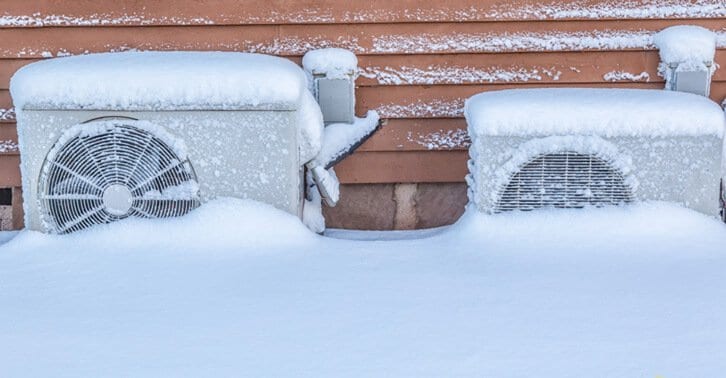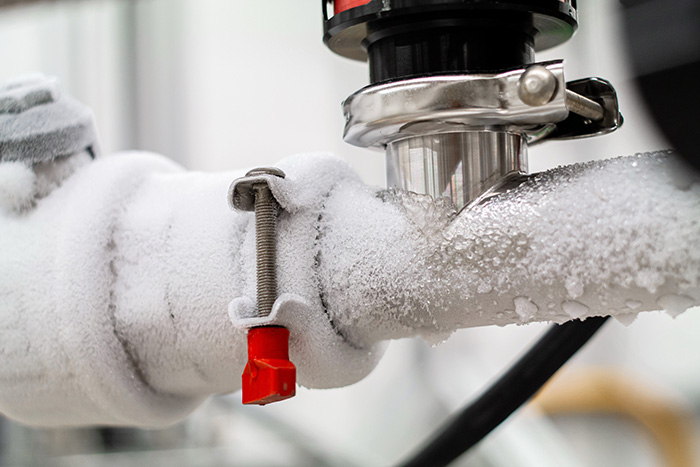Actions to Follow When Your AC Pipe is Frozen: Comprehensive Handbook
Actions to Follow When Your AC Pipe is Frozen: Comprehensive Handbook
Blog Article
This article down below in relation to How can I fix an air conditioner’s frozen pipe? is totally enjoyable. Don't miss out on it.

Intro
Uncovering that your air conditioning pipe is frozen can be concerning, specifically during hot summer season when you depend on your air conditioning system one of the most. Recognizing what to do in such a scenario is vital to avoid further damages to your cooling system and ensure your convenience inside your home.
Comprehending the Causes
Numerous aspects can contribute to the freezing of an air conditioning pipeline. Recognizing these causes can aid you deal with the problem effectively.
Lack of Airflow
One usual source of an icy a/c pipe is inadequate air movement. When the air flow over the evaporator coil is limited, it can trigger the coil to go down below freezing temperature level, causing ice formation on the pipe.
Low Refrigerant Levels
Insufficient cooling agent levels in your AC system can also result in a frozen pipeline. Reduced refrigerant levels can trigger the stress in the system to drop, resulting in the freezing of moisture on the evaporator coil.
Winter Conditions
In cooler climates, freezing temperature levels outside can contribute to the freezing of a/c pipes. If your a/c unit is not properly shielded or if there are leaks in the ductwork, cold air can penetrate the system, causing the pipeline to freeze.
Dirty Air Filters
Filthy or clogged air filters can limit air flow in your a/c system, causing different issues, consisting of a frozen pipe. It's necessary to change or clean your air filterings system routinely to make certain correct air movement and avoid ice build-up.
Indicators of a Frozen Air Conditioning Pipe
Acknowledging the signs of an icy AC pipe is important for prompt action.
Reduced Airflow
If you see a substantial decline in airflow from your vents, it might indicate an icy pipe.
Ice Buildup on the Pipe
Visible ice accumulation on the refrigerant line or the evaporator coil is a clear sign of an icy AC pipeline.
Strange Sounds from the Unit
Unusual audios, such as hissing or gurgling, coming from your AC system can indicate that there's ice present on the pipe.
Immediate Actions to Take
When confronted with an icy air conditioning pipeline, it's important to act swiftly to prevent further damage to your air conditioning system.
Switching off the air conditioning
The first step is to switch off your air conditioning unit to prevent the system from running and worsening the problem.
Checking for Blockages
Examine the location around the indoor device for any obstructions that may be blocking air flow, such as furniture or curtains.
Defrosting the Pipe
You can utilize gentle techniques like positioning towels taken in cozy water around the icy pipe to aid thaw it gradually.
Safety nets
Taking safety nets can assist prevent future incidents of an icy air conditioning pipeline.
Routine Maintenance Checks
Schedule normal maintenance talk to an expert HVAC specialist to make certain that your a/c system is running successfully.
Transforming Air Filters
Frequently change or clean your air filters to avoid airflow restrictions and maintain optimum efficiency.
Protecting Exposed Pipes
If your air conditioning pipes are exposed to chilly temperature levels, consider shielding them to prevent freezing throughout cold weather.
Looking For Professional Help
If DIY techniques fall short to resolve the issue or if you're unclear concerning just how to proceed, it's best to look for aid from a certified HVAC specialist.
When DIY Methods Fail
If your attempts to thaw the pipe or address various other concerns are unsuccessful, it's time to employ a professional.
Value of Hiring a Professional HVAC Technician
A qualified HVAC service technician has the expertise and tools needed to diagnose and fix concerns with your air conditioning system safely and properly.
Conclusion
Handling a frozen a/c pipe can be a frustrating experience, yet knowing exactly how to respond can help minimize damage and restore convenience to your home. By understanding the causes, identifying the signs, and taking prompt activity, you can effectively deal with the issue and prevent future events.
Frozen AC Line: Why It Happens & What To Do About It
A frozen AC line can be a rather peculiar sight in a place like Phoenix, Arizona where nothing ever freezes. In this post, we’ll discuss what makes an air conditioner line frozen – and what you can do about it.
Dirty Air Filters
Did you know that you should be cleaning or replacing your air filters on a monthly basis? Failing to do this can result in airflow issues that, in turn, cause your evaporator coils and lines to freeze over. You’ll notice a buildup of ice on both components, although the buildup on your pipes will, of course, be more evident unless you open your air condition up to reveal the coils.
What To Do About It
Give your air filter a good cleaning if it’s reusable. If not, replace the filter outright. Next, switch your air conditioner’s fan setting on and leave it there for 2-3 hours. This will draw warm air in, helping to thaw your evaporator coil. You can also check out this article for some tips on cleaning the coils themselves if you’d like to speed the process up. Before you switch the unit back to its normal state, make sure the supply vents are completely unobstructed and free of dust or other debris.
If you keep having this issue even after replacing your filters regularly, contact a local HVAC repair company and have them inspect your evaporator coil, ductwork, and any other components that may be at fault. If you live in the Phoenix, Arizona area, give American Home Water and Air a call.
Low Refrigerant Levels/Leakage
What To Do About It
Contrary to what air conditioner “recharge” companies often tell their clients about refrigerant, it should never need to be simply refilled. You see, refrigerant runs in what experts refer to as a “closed loop.” Refrigerant really shouldn’t be leaving that loop. If it is, you’ve got a leak.
Paying someone to come and pump more refrigerant into your system (aka “recharge” it) isn’t the solution. Doing that will simply kick the can down the road. Besides, refrigerant leaks can be harmful to the environment and people in your home.
Rather, you need to take care of the leak with the help of a technician. Check out this article for some more information about dealing with air conditioners that are leaking refrigerant. Before you contact a technician, switch your thermostat to the off position. Then, switch the fan setting on and let it run for 2-3 hours so the unit can thaw.
Improper Temperature Setting
Improper temperature settings can also cause a drop in your air conditioner’s pressure. What many people don’t realize is that air conditioners are actually designed to run when temperatures have fallen above roughly 60 degrees Fahrenheit. If you run the unit when it’s cold outside, you’ll run into many issues, including frozen components.

Do you really like reading about How can I fix an air conditioner’s frozen pipe?? Make feedback below. We would be glad to listen to your insights about this blog. In hopes that you come back again before long. Appreciated our write-up? Please share it. Let another person find it. I treasure reading our article about Have a Frozen AC Line? Here’s How to Fix It.
Check Us Out Report this page